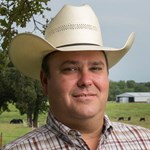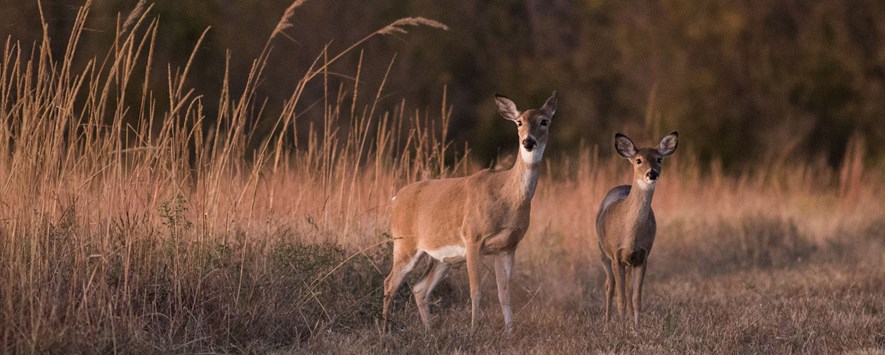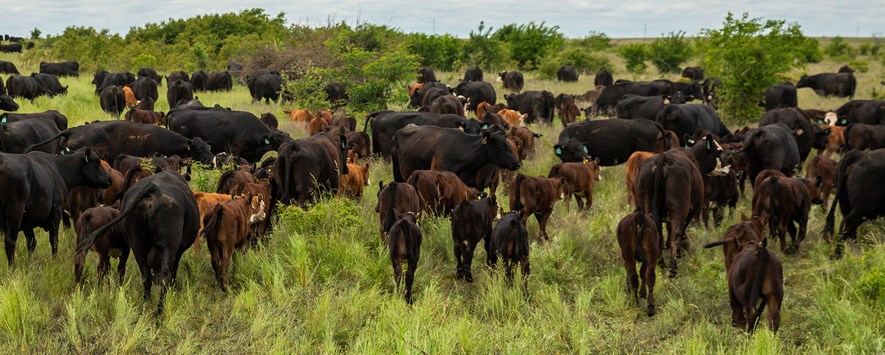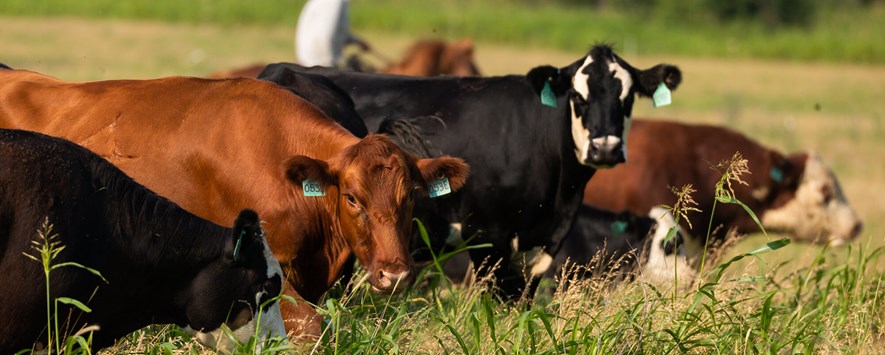It is typically reported that cow winter supplementation accounts for 40 to 60% of the total annual cost of maintaining a cow, but that cost depends greatly on whether hay is being supplemented in lieu of dormant standing forage for the cow. When you can supply standing forage in the form of native grass pasture instead of a bale of hay, the total winter feed cost will be dramatically reduced.
We will compare four different feeding scenarios:
Winter Hay Substitution Comes at a Cost
For many producers, it is not uncommon to incur four or five months of hay feeding during the winter. When fed average-quality forage, a 1,200-pound cow will consume about 2.5% of her body weight daily. That equates to 900 pounds of forage monthly, roughly equivalent to the weight of the average bale of hay. This does not include hay wasted in storage or during feeding. Thus, four to five bales of hay could be required per cow for the winter feeding period.
At a typical cost of $45 per bale, the cost of winter hay substitution alone accounts for $180 (for four months) to $225 (for five months) per cow. Add to this the cost of additional feed supplementation, if the hay is not high enough quality to meet the cow’s nutritional requirements. If using average quality hay [8% crude protein (CP) and 50% total digestible nutrients (TDN)], feeding 20% protein range cubes ($250 per ton) as a supplement would add $46 to the per-cow feed costs. The total winter feeding cost if using hay, therefore, would likely range between $224 and $269 per cow (Table 1).
However, there are other options of maintaining a cow through the winter that are more cost-effective. Using native grass (NG) as a stockpiled, standing hay crop is one of the most cost-effective methods of overwintering the cow herd.
Comparing Winter Supplementation Programs for Spring-Calving Cows
Using a few basic assumptions for the quality of the native grass pasture, we can start to build a winter supplementation program for spring-calving cows. The first assumption is that mid-March will be the average calving date for the herd. The second assumption is the forage quantity is not limited, but quality will diminish from 5 to 4% CP and 55 to 49% TDN during the winter.
Table 1 demonstrates that all supplemental feed costs while grazing winter-dormant native grass pastures are well below the $224 to $269 total cost of feeding hay plus supplementation. Additionally, feeding scenarios 1 through 3 demonstrate that the most economical feed on a cost-per-ton basis is not always the right feed to purchase. In this case, scenario 3 has the highest cost per ton of feed but will deliver the most economical annual winter feeding cost on a per-head basis.
Table 1. Total Cost and Total Amounts of Feed Required to Meet Cow Nutritional Requirement by Month




Knowing when the average of the cow herd will calve can help you determine the supplementation strategy that best fits your operation. Thus a well-defined, concise calving season helps to improve profitability by reducing winter feeding costs.
Remember, cows don’t necessarily care about quality (percentage of CP or TDN) of the feed as much as they do the total physical amount of feed that they receive. Nutritional requirements can be met with lower amounts of more nutrient-dense feeds. Many times, the cow is most limited by energy, so it is also important to know the TDN content of the feed. This is a question that will have to be asked since the feed tag does not give enough information to effectively determine energy content.




